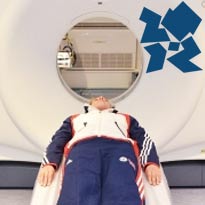GE provides Olympics polyclinic imaging
- 25 July 2012

GE Healthcare is providing the imaging technology for the polyclinic that will treat athletes at the London 2012 Olympic and Paralympic Games.
The polyclinic is a 5,000 sqm, four-storey building located within the Olympic Village in Stratford, next to the Olympic Park.
It will treat the 16,000 Olympic athletes and team officials and 6,200 Paralympic athletes and team officials who will live in the village.
The polyclinic will house GE’s wireless digital x-ray system, ultrasound systems, two MRI scanners, a CT scanner, and an ECG diagnosis system to analyse and monitor heart rhythms.
It will also deploy GE’s Centricity Web PACS picture archiving and communications and Centricity RIS radiology information system.
GE Healthcare chief executive officer, John Dineen, said that the company was “delighted to be providing a broad range of our latest healthcare technology for the London 2012 polyclinic.”
“These technologies will provide insight into athlete health, as well as offering wider benefits for the general public,” he said.
The London Organising Committee of the Olympic Games expects the polyclinic to deal with most injuries, such as strains and sprains, minor illnesses, as colds, and superficial trauma such as wounds and grazes.
Services in the polyclinic will be provided by a team of ten LOCOG staff, 500 ‘games makers’ or volunteers, and 80 on-call specialists.
There will be up to three GPs and three nurses on duty at any one time and the site expects to treat approximately 200 athletes every day. Up to 22 imaging staff will run the imaging services, which will have the capacity for 70 scans per day.
For more serious problems, the specialists available will include cardiologists, dermatologists, gastroenterology, neurology, obstetrics and gynaecology, maxillofacilial surgery, orthopaedic surgery, ophthalmology and psychiatry.
For the most serious cases, athletes will be sent to the Royal London Hospital, Homerton University Hospital and Univeristy College London Hospital.
After the games, the polyclinic will be taken over by the NHS and re-opened for the new community that will live in East Village and for residents of Newham and neighbouring boroughs.
The BMJ has reported that over half of the £17m building costs will be contributed by the NHS.
GE Healthcare’s imaging technology will also support anti-doping efforts at the games.
A biomolecular imager from the company will be used to help detect recombinant erythropoietin or EPO, a performance enhancing drug that is used to boost the number of red blood cells in an athletes’ body and so improve oxygen flow.
The testing will be undertaken at the new Anti-Doping Science Centre in Harlow, Essex. The ImageQuant system that will be used for the games is also used in research into new drug therapies.




